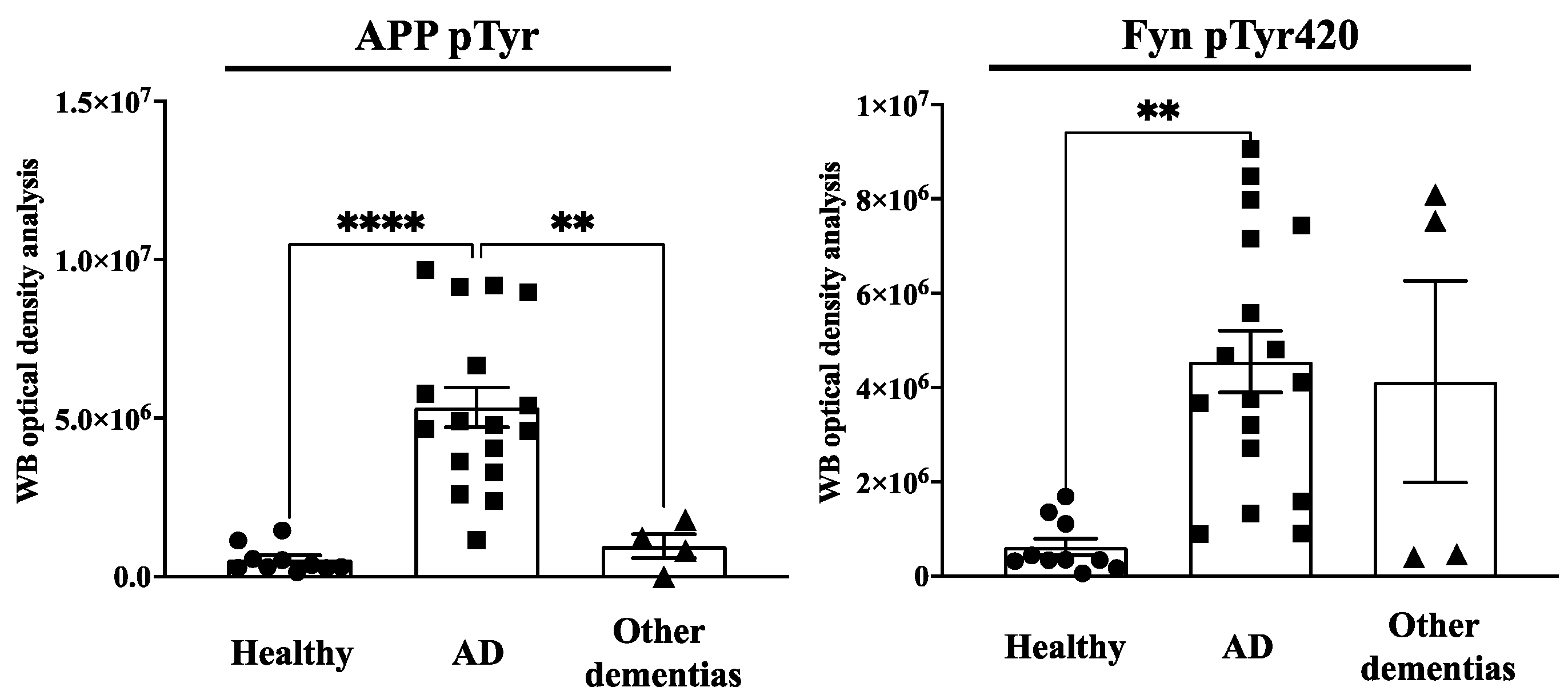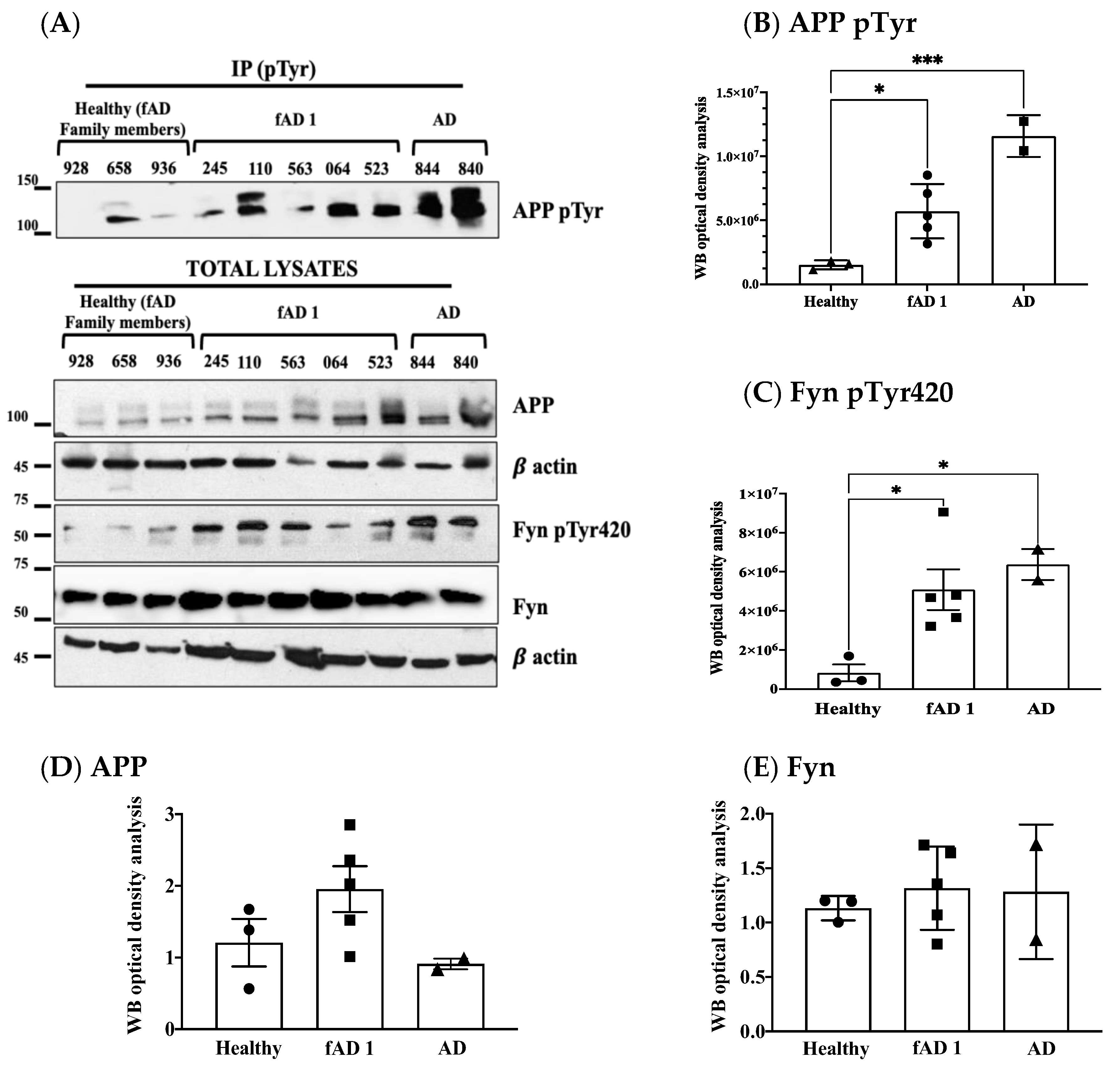Correction: Iannuzzi et al. Might Fibroblasts from Patients with Alzheimer’s Disease Reflect the Brain Pathology? A Focus on the Increased Phosphorylation of Amyloid Precursor Protein Tyr682 Residue. Brain Sci. 2021, 11, 103
Error in Figure
Reference
- Iannuzzi, F.; Frisardi, V.; Annunziato, L.; Matrone, C. Might Fibroblasts from Patients with Alzheimer’s Disease Reflect the Brain Pathology? A Focus on the Increased Phosphorylation of Amyloid Precursor Protein Tyr682 Residue. Brain Sci. 2021, 11, 103. [Google Scholar] [CrossRef] [PubMed]


Disclaimer/Publisher’s Note: The statements, opinions and data contained in all publications are solely those of the individual author(s) and contributor(s) and not of MDPI and/or the editor(s). MDPI and/or the editor(s) disclaim responsibility for any injury to people or property resulting from any ideas, methods, instructions or products referred to in the content. |
© 2023 by the authors. Licensee MDPI, Basel, Switzerland. This article is an open access article distributed under the terms and conditions of the Creative Commons Attribution (CC BY) license (https://creativecommons.org/licenses/by/4.0/).
Share and Cite
Iannuzzi, F.; Frisardi, V.; Annunziato, L.; Matrone, C. Correction: Iannuzzi et al. Might Fibroblasts from Patients with Alzheimer’s Disease Reflect the Brain Pathology? A Focus on the Increased Phosphorylation of Amyloid Precursor Protein Tyr682 Residue. Brain Sci. 2021, 11, 103. Brain Sci. 2023, 13, 1588. https://doi.org/10.3390/brainsci13111588
Iannuzzi F, Frisardi V, Annunziato L, Matrone C. Correction: Iannuzzi et al. Might Fibroblasts from Patients with Alzheimer’s Disease Reflect the Brain Pathology? A Focus on the Increased Phosphorylation of Amyloid Precursor Protein Tyr682 Residue. Brain Sci. 2021, 11, 103. Brain Sciences. 2023; 13(11):1588. https://doi.org/10.3390/brainsci13111588
Chicago/Turabian StyleIannuzzi, Filomena, Vincenza Frisardi, Lucio Annunziato, and Carmela Matrone. 2023. "Correction: Iannuzzi et al. Might Fibroblasts from Patients with Alzheimer’s Disease Reflect the Brain Pathology? A Focus on the Increased Phosphorylation of Amyloid Precursor Protein Tyr682 Residue. Brain Sci. 2021, 11, 103" Brain Sciences 13, no. 11: 1588. https://doi.org/10.3390/brainsci13111588
APA StyleIannuzzi, F., Frisardi, V., Annunziato, L., & Matrone, C. (2023). Correction: Iannuzzi et al. Might Fibroblasts from Patients with Alzheimer’s Disease Reflect the Brain Pathology? A Focus on the Increased Phosphorylation of Amyloid Precursor Protein Tyr682 Residue. Brain Sci. 2021, 11, 103. Brain Sciences, 13(11), 1588. https://doi.org/10.3390/brainsci13111588




